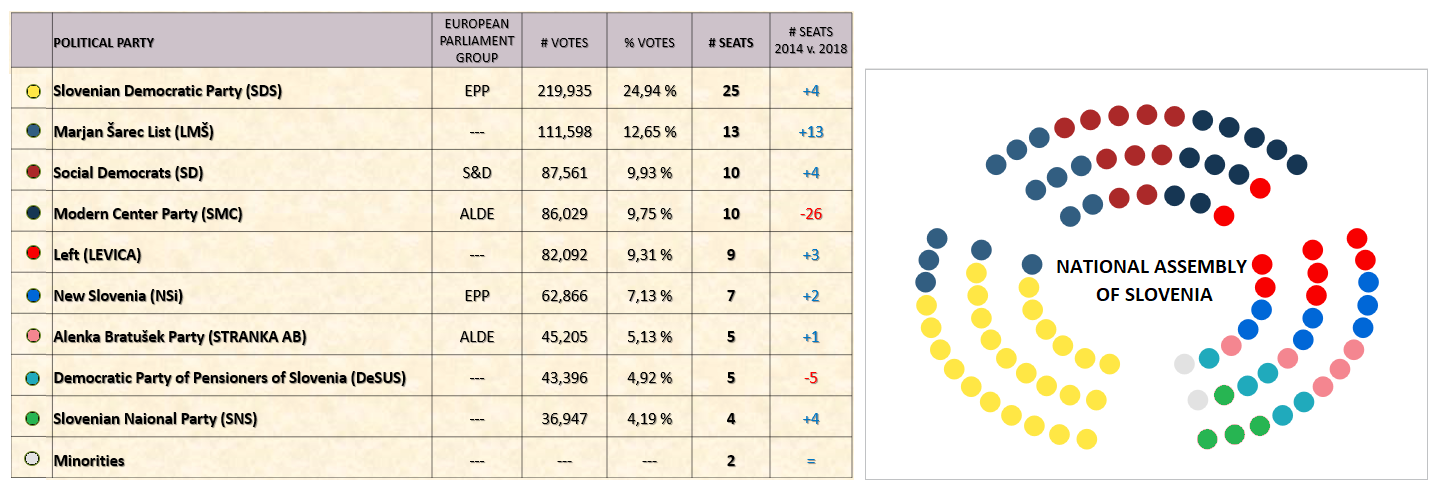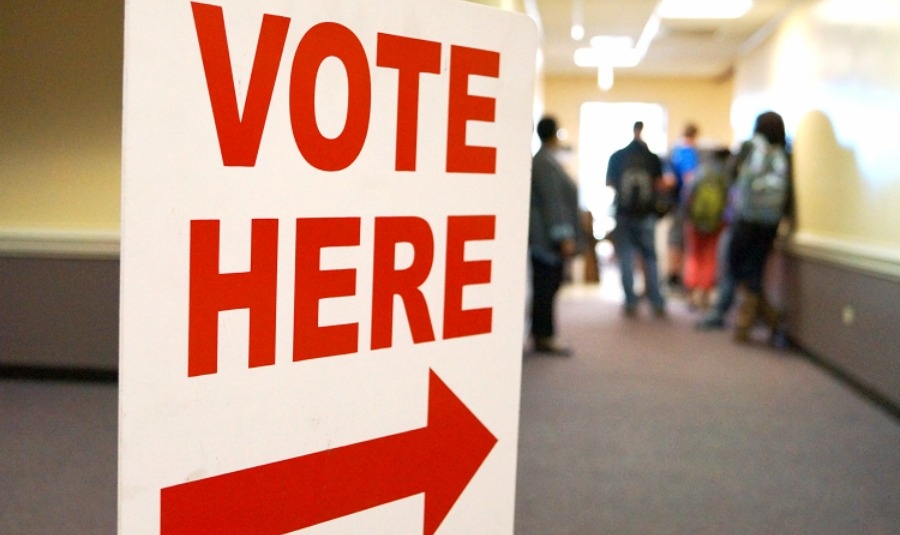On Sunday, June 3, the Slovenes voted in the snap parliamentary election. Nine political parties passed a minimum 4% threshold to gain representation in the National Assembly, a record in Slovenia’s history.
The winner was the Social Democratic Party (SDS) with 24,94% of the vote, taking 25 seats in the National Assembly (Državni zbor).
A newcomer the Marjan Šarec List (LMS), named after the runner-up in the last presidential election in 2017 with 46.91% of the vote in the 2nd round of voting, came second with 12.65% of the vote and 13 seats, followed by the Social Democrats (SD), the second-largest member of the outgoing government coalition, led by Dejan Zidan, came third with 9.93% of the vote and 10 seats.
The Modern Center Party (SMC), the largest member of the outgoing government coalition, led by outgoing Prime Minister Miro Cerar, which received 9.75% of the vote and 10 seats.
The Left (Levica) led by Luka Mesec came 5th with 9.31% of the vote and 9 seats.
The New Slovenia (NSi) led by Matej Tonin received 7.13% of the vote and 7 seats; the Alenka Bratušek Party (Stranka AB) led by the former Prime Minister (2013-2014) with 5.12% of the vote and 5 seats.
The Democratic Party of Pensioners of Slovenia (DeSUS), the smallest member of the outgoing government coalition, led by Karl Erjavec received 4.91% of the vote and 5 seats.
And finally the Slovenian National Party (SNS), led by Zmago Jelinčič Plemeniti, with 4.19% of the vote and 4 seats.
Two political party leaders, Karl Erjavec and Alenka Bratušek, were not elected to the National Assembly, even though their parties will have representatives in the house.
This year, turnout at the election was 52.09% (51.73% in 2014, 65.60% in 2011, 63.10% in 2008, 60.65% in 2004, and 70.14% in 2000).
 Source: Republic of Slovenia State Election Commission; Author’ Calculations.
Source: Republic of Slovenia State Election Commission; Author’ Calculations.
On June 5, Slovenia’s president Borut Pahor offered a mandate to form the government to Janez Janša, a leader of a rightwing party SDS that won the most votes in Sunday’s parliamentary elections.
To successfully form a government, the SDS needs to form a coalition with at least two other political parties that have made it into the 90-member national assembly. Forming such centrist or center-right coalition could take weeks, if not months.
Such government might well reform the healthcare and pensions systems, fulfill the government’s promise to privatize Nova Ljubljanska Banka (NLB), reduce the administrative and regulatory burden on the private sector, lower income taxes, increase the employability of low-skilled and older workers, and increase competition and independent oversight in public procurement.
In the event Janez Janša is not able to form a coalition government, president Pahor will most likely offer a mandate to Marjan Šarec, who has stated both before and after the election that his party will not be part of a coalition with SDS.
In the event Marjan Šarec forms a coalition, that would require at least 5 political parties with often opposite positions to come together, which might be possible in the hype of the post-election time, but extremely difficult to keep together in a long run.
Finally, if also Marjan Šarec is unsuccessful at the challenge of forming a coalition, the president will have one last try at identifying the next Prime Minister of Slovenia, otherwise, the new parliamentary elections will be held later this year.



